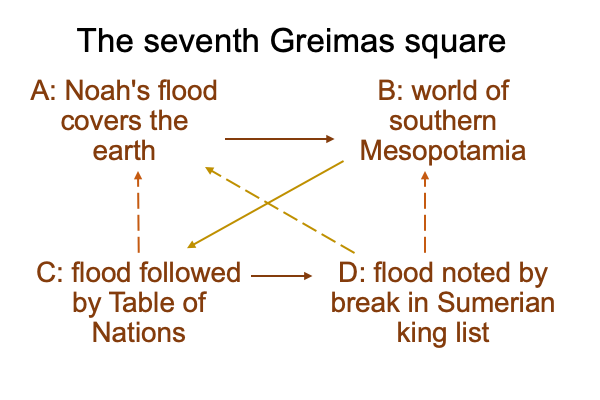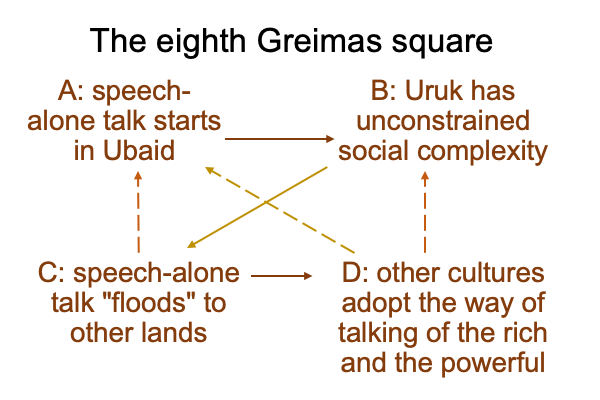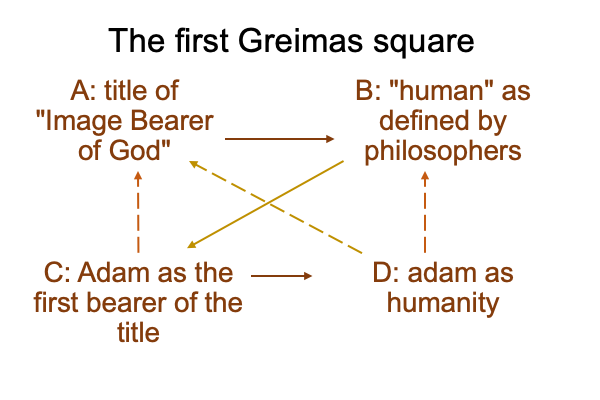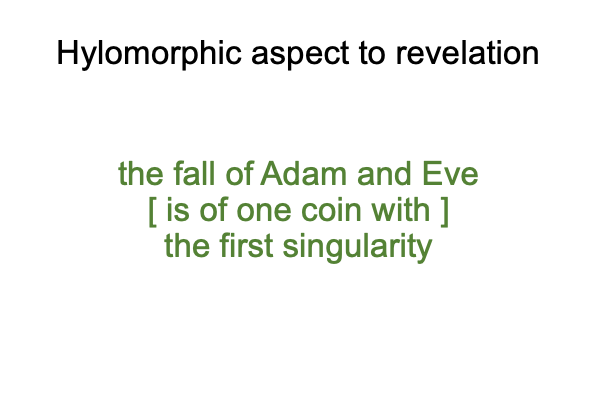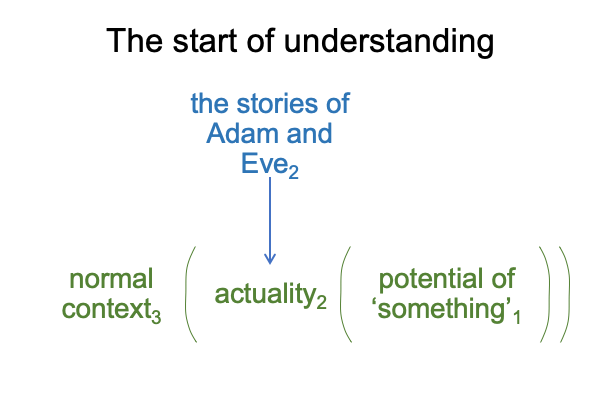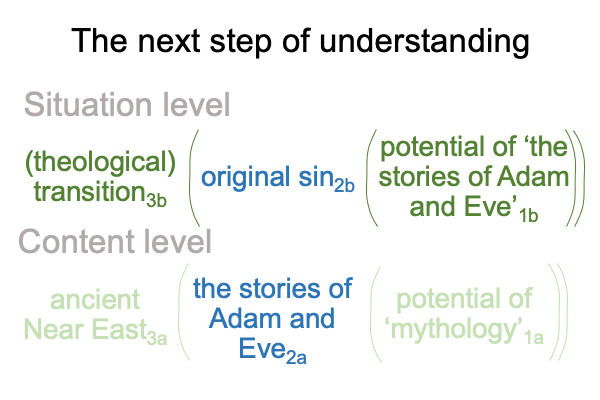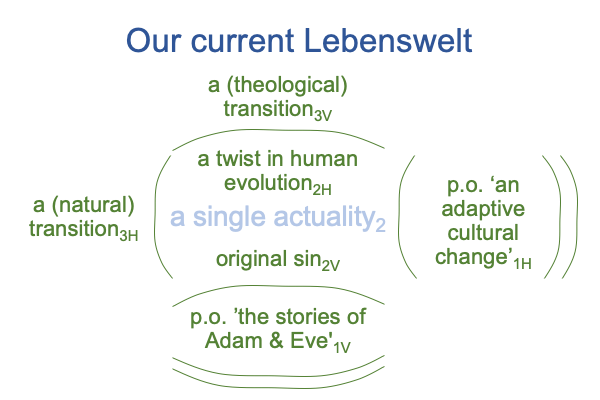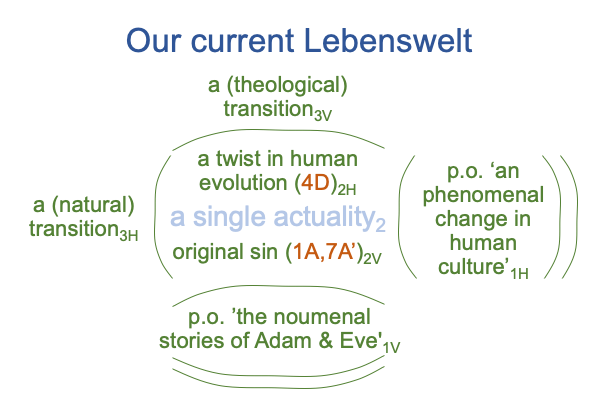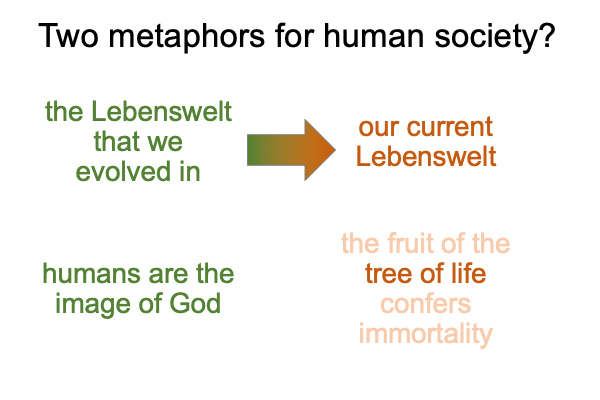Looking at Andrew Ter Ern Loke’s Book (2022) ” The Origin of Humanity and Evolution” (Part 19 of 22)
0162 What contributes this feeling of understanding in a completed three-level interscope?
Understanding conveys a feeling of satisfaction.
For example, when confronted with an uncontextualized actuality, one does not know its normal context or potential. That does not convey any feeling of satisfaction.
In contrast, an actuality2a in a content-level nested form is not scary. It is content. The normal context3a is what is happening. The potential is for ‘something’ to happen1a. Knowing the normal context3a and potential1a at least conveys a feeling of understanding.
If understanding comes from placing an actuality2 into a nested form, then how much more intellectually satisfying is situatingb contenta in the light of a perspectivec?
0163 The Traducian doctrine is beautiful to behold.
When I look down each column in the interscope for the Traducian doctrine, I see a virtual nested form.
0164 For example, here is a picture of the virtual nested form in the realm of actuality.
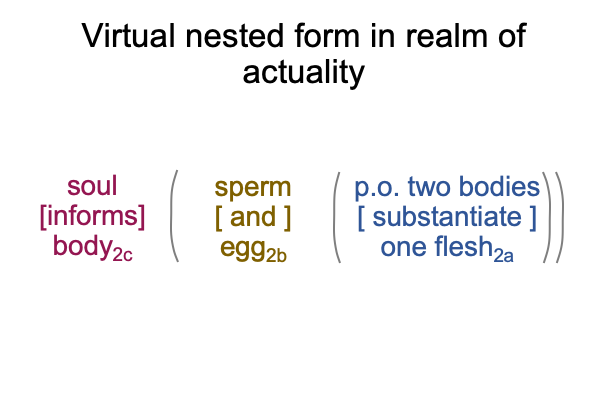
Two of these actualities belong to the two configurations of body and soul.
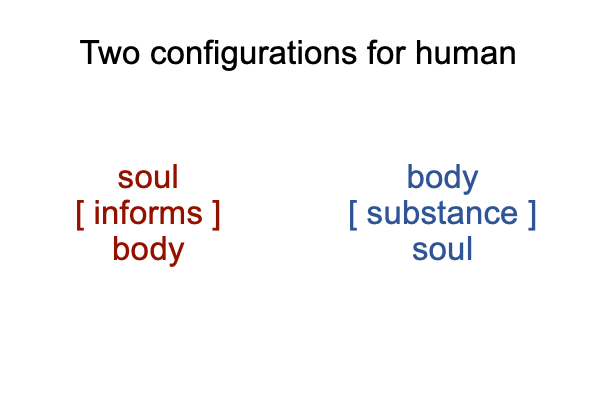
Their arrangement offers a theological lesson.
The perspective-level actuality2c associates to grace. Soul [informs] body.
The content-level actuality2b associates to nature, where body [substantiates] soul. Look at the content-level actuality2aand make the comparison. The doctrine of Traducianism offers a lesson that coheres to the meaning of marriage.
0165 Here is the virtual nested form in the realm of normal contexts.
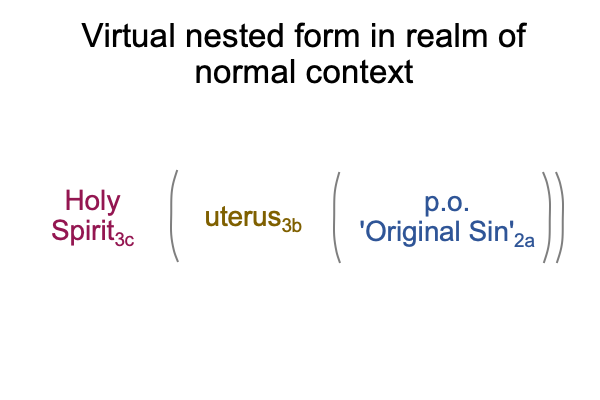
Do I see an intimation of the Catholic doctrine of the Immaculate Conception of Jesus?
The funny thing is Mary, Mother of God, is not simply a uterus.
Mary is the mediatrix3b, dwelling between the normal context3 of the Holy Spirit3c and the potential1 of Original Sin1a. She is baptized even before Christ institutes the sacrament of baptism. Her womb is the site of God’s revelation.
Replace the normal context of uterus3b with the name of Mary, Mother of God, and one may appreciate why the Catholic Church proclaims that Mary is born without the stain of Original Sin. How else could she have the courage of her convictions? How else could she bear her unbearable responsibility?
0166 Here is the virtual nested form in the realm of possibility.
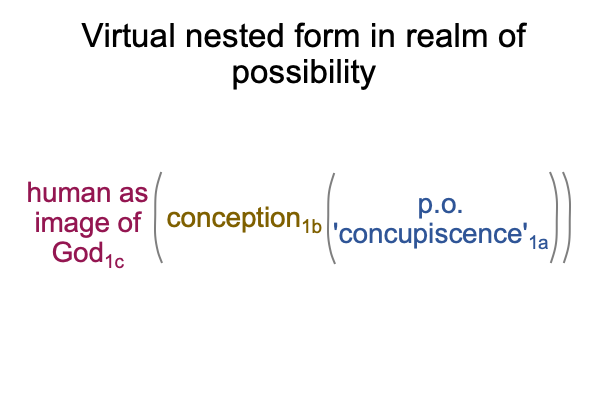
0167 This nested form captures the essence of the Augustinian notion of the corruption of humanity following Adam’s transgression. Theological debate ranges from theatrical claims of total depravity to scholarly assessments concerning the loss of original justice. We are conceived in sin. How does that impair our ability to wear the badge, “Image Bearer of God”?
0168 When rendered as a filled-in three-level interscope, the doctrine of Traducianism is beautiful to behold. The virtual nested forms come alive, each in its own way, in the intellectual ferment that Christianity enjoys. Jesus came so that we may have life, abundant life. That includes intellectual life.

